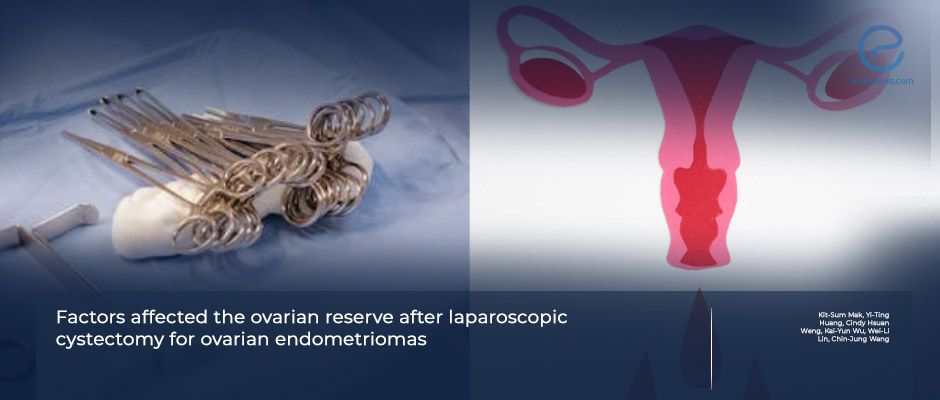Predictive factors for decline in postoperative serum AMH levels following endometrioma surgery
Jan 7, 2025
The decline in serum AMH levels could be predicted using bilaterality of endometriomas and pre-operative serum AMH levels in women with endometriosis.
Key Points
Highlights:
• Ovarian cystectomy for endometrioma may cause diminished serum anti-Mullerian hormone (AMH) levels, especially in women with bilateral endometrioma and low serum baseline AMH levels before the surgery.
Importance:
• Women with endometriosis should be informed that bilaterality and low pre-operative AMH levels have a negative effect on the AMH value in the long term postoperatively.
What’s done here?
• This retrospective cohort study was conducted to assess the predictive factors for the reduction in post-operative serum AMH levels.
• Unilateral or bilateral ovarian cystectomy were performed in all participants by the experienced gynecologic surgeon team at a tertiary referral center using laparoscopic methods.
• Serum AMH levels were measured before the surgery and at 10 days and 6 months following the surgery.
• Univariate and multivariable logistics regression analysis was performed to assess the single and joint effects of the variables such as age, BMI, parity, size and locations of the endometrioma and the pre-operative serum AMH levels on the change of serum AMH levels following surgery.
Key results:
• A total of 409 patients who met the eligibility criteria were included in two groups: 252 patients with unilateral endometriomas and 157 with bilateral endometriomas.
• Significant difference was detected between both 10-day and six-month reductions in serum AMH levels and baseline levels, but no significant difference was found when comparing the lesion site.
• Larger tumors, longer operating times and higher rASRM scores were observed in bilateral group.
• In addition, significant lower serum AMH levels at both time points was found in bilateral group compared to unilateral group.
• Tumor size and surgeon experience did not have any significant effect on the decline in ovarian reserve.
• Bilaterality and baseline serum AMH levels were identified as the significant predictors for decline in serum AMH levels following surgery.
Strengths and Limitations:
• This is the first study analyzing the association between the side and the size of ovarian endometriomas with the decline in ovarian reserve.
• Retrospective design, inclusion of a single-institution and heterogeneous population of patients with endometriomas regarding age, parity, disease extent are the limitations of the study.
Lay Summary
Women with endometrioma seek treatment because of symptoms such as pelvic pain and infertility that reduce their quality of life. There are several management approaches including medical and surgical options. Ovarian cystectomy using laparoscopic or robotic devices is one of the preferred therapy in endometrioma patients, especially having untreatable pain with medical options.
However, it has been known that ovarian reserve is adversely affected following surgical treatment of endometriomas.
Mak et al., from Taiwan, published a review article titled “Factors affected the ovarian reserve after laparoscopic cystectomy for ovarian endometriomas” in the journal named European Journal of Obstetrics & Gynecology and Reproductive Biology. The authors aimed to evaluate the correlation between the site and size of endometriomas and serum AMH reduction after endometriosis surgery. Age, parity, body mass index, operative blood loss, pre-operative serum AMH levels and tumor size did not show any significant difference between the unilateral and bilateral endometrioma groups. There was a significant difference between both 10-day and six-month reductions in serum AMH levels and baseline levels, but no significant difference was found when comparing the lesion site.
Larger tumors, longer operating times, higher rASRM scores and significant lower serum AMH levels at both time points were observed in bilateral group compared to unilateral group.
“Bilaterality and pre-operative serum AMH level are the two key factors that affect ovarian reserve after laparoscopic cystectomy.” the authors added.
Research Source: https://pubmed.ncbi.nlm.nih.gov/39504809/
ovarian endometriosis endometrioma ovarian reserve bilaterality ovarian cystectomy laparoscopic cystectomy enucleation

